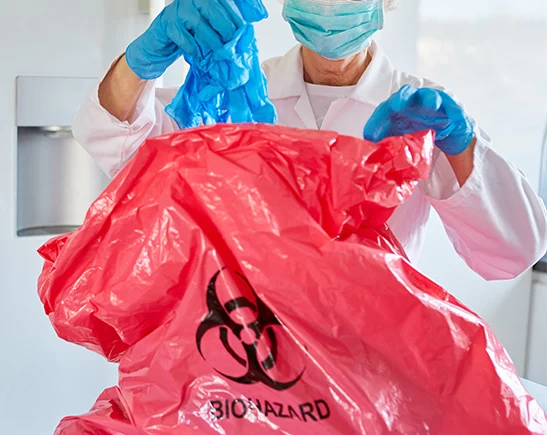Safe and Secure: The Conclusive Selection for Expert Medical Waste Removal Solutions
Safe and Secure: The Conclusive Selection for Expert Medical Waste Removal Solutions
Blog Article
Understanding the Different Kinds Of Garbage Disposal Methods
In the realm of waste management, the array of disposal methods available today is vast and differed, each method serving an unique function in addressing the obstacle of garbage disposal. click here. From recycling techniques that intend to give new life to materials, to the complex procedures of contaminated materials management, the landscape of waste disposal is complicated yet critical for ecological sustainability. Recognizing the subtleties of these various techniques not only drops light on the value of liable waste monitoring yet additionally motivates us to reassess our approach towards waste disposal in a swiftly evolving world
Recycling Approaches
Reusing methods are crucial for lasting waste management techniques in both commercial and property settings. medical waste disposal. By executing efficient recycling approaches, a considerable amount of waste can be drawn away from garbage dumps, conserving natural deposits and reducing the ecological impact of manufacturing processes
In household areas, curbside recycling programs play an important duty in encouraging houses to separate recyclable materials from basic waste. Materials such as paper, plastics, glass, and steels can be sorted and collected for handling into brand-new products, reducing the requirement for basic materials and energy-intensive manufacturing procedures.
Industrial facilities likewise count on reusing methods to lessen waste generation and advertise a circular economic situation. By carrying out closed-loop systems, companies can recycle materials within their manufacturing processes, decreasing prices and ecological footprint. medical waste removal near me. In addition, industrial recycling programs commonly entail partnerships with specialized recycling facilities to ensure that products are correctly arranged, refined, and rehabilitated into the supply chain
Composting Techniques

Aerated static stack composting involves blending organic waste products in a large heap and consistently transforming it to ensure correct aeration. This approach is effective for large-scale composting procedures. On the other hand, vermicomposting makes use of earthworms to break down raw material right into nutrient-rich castings. This strategy is appropriate for smaller-scale procedures and homes.
In-vessel composting involves positioning organic waste in a closed container with regulated conditions for temperature level and oygenation. This technique works for taking care of food waste in urban areas. Windrow composting consists of forming long rows of natural waste and on a regular basis transforming them to promote decay. This method is typically made use of in farming setups.
Landfill Disposal
Garbage dump disposal is a typically made use of method for handling waste that can not be reused or composted. It includes burying waste in assigned areas of land, with appropriate safety measures to protect against environmental contamination. Landfills are crafted facilities made to isolate waste from the surrounding setting. The waste is compressed and covered with dirt daily to reduce smells, hinder pests, and minimize the spread of trash. Modern land fills are geared up with protective liners and keeping track of systems to prevent leakage of dangerous substances right into the dirt and groundwater. Methane gas, a by-product of breaking down organic waste in landfills, is usually accumulated and made use of as a resource of renewable resource. Regardless of improvements in landfill innovation, concerns remain regarding the long-lasting environmental effects, such as groundwater contamination and greenhouse gas discharges. Efforts to minimize reliance on garbage dumps include promoting waste reduction, recycling, and exploring different garbage disposal approaches to decrease the ecological impact connected with standard garbage dump disposal methods.

Waste-to-Energy Incineration
Incineration of waste for power generation is a method progressively being taken into consideration as an alternative to standard land fill disposal techniques. Waste-to-energy incineration includes the burning of waste products at high temperatures, normally in specialized centers designed to produce power or heat through the process - click here. This strategy not only decreases the quantity of waste that would certainly otherwise be destined for garbage dumps but likewise harnesses the warm created during incineration to create power
One of the crucial benefits of waste-to-energy incineration is its capacity to generate power while minimizing the environmental influence contrasted to conventional land fill disposal methods. By transforming waste right into power, this technique assists in decreasing greenhouse gas discharges and dependence on nonrenewable fuel sources for energy generation. In addition, waste-to-energy centers are geared up with innovative air pollution control modern technologies to alleviate potential toxic wastes launched throughout the combustion process.
Contaminated Materials Monitoring

Considering the critical importance of accountable waste monitoring practices, particularly in the realm of environmental sustainability, the emphasis now shifts towards the complex domain name of Contaminated materials Monitoring. Contaminated materials postures substantial threats to both human health and wellness and the atmosphere, requiring specific handling and disposal strategies. Typical instances of harmful waste include chemicals, batteries, chemicals, and electronic waste.
Contaminated materials Administration involves the recognition, collection, transportation, therapy, and disposal of products considered potentially harmful or hazardous. This process calls for adherence to strict policies and guidelines to alleviate negative effect on communities and public health and wellness. Different techniques are used in handling hazardous waste, consisting of recycling, safe garbage dumps, encapsulation, and chemical treatment.
Appropriate Contaminated Materials Management is crucial for stopping contamination of soil, water sources, and air contamination. It is crucial for markets, laboratories, medical care facilities, and other generators of contaminated materials to apply robust management strategies, training programs, and emergency situation feedback prepares to make certain the safe handling and disposal of these materials. Failure to handle hazardous waste properly can have far-ranging effects, underscoring the relevance of diligent and accountable techniques in this field.
Final Thought
In final thought, waste disposal techniques play an important function in managing and reducing the impact of waste on the environment. It is vital for people and markets to recognize the various waste disposal methods offered and choose the most ideal approach for sustainable waste management.
In the world of waste administration, the range of disposal techniques readily available today is substantial and differed, each method offering an unique purpose in dealing with the obstacle of waste disposal. click here. From reusing approaches that aim to offer brand-new life to materials, to the intricate procedures of harmful waste administration, the landscape of waste disposal is complex yet essential for ecological sustainability. Comprehending the nuances of these various methods not only loses light on the value of responsible waste monitoring however also triggers us to reconsider our technique towards waste disposal in a swiftly evolving globe
Efforts to lower reliance on land fills include promoting waste decrease, recycling, and checking out alternative waste disposal approaches to reduce useful reference the ecological footprint linked with traditional land fill disposal methods.
It is important for markets and people to understand the various waste disposal techniques offered and choose the most appropriate technique for lasting waste management.
Report this page